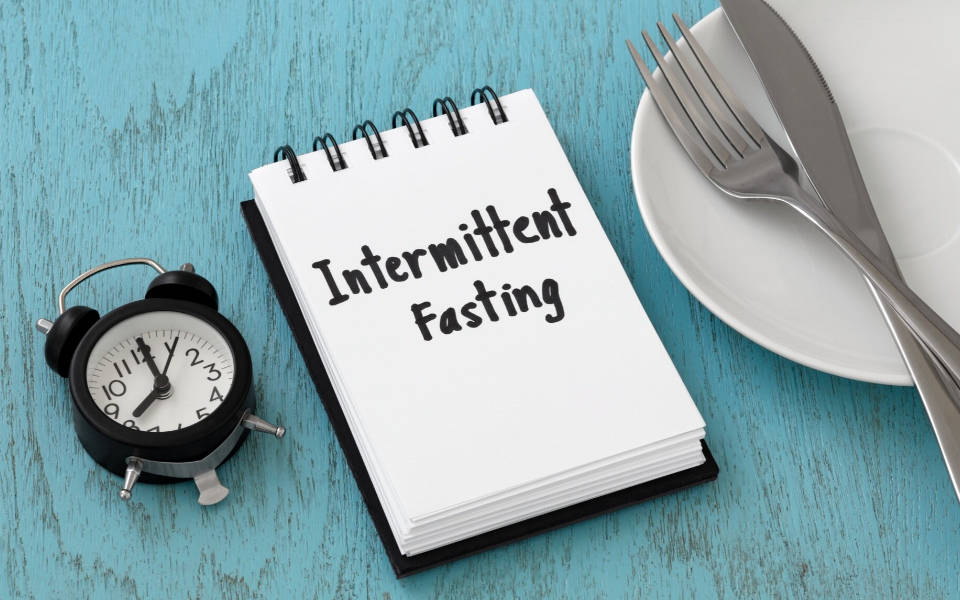
SUBSCRIBE TO OUR NEWSLETTER
Subscribe to our newsletter to stay informed about articles, events, and updates from Wellness Impact.

Subscribe to our newsletter to stay informed about articles, events, and updates from Wellness Impact.

With Examples and Meal Plans
In this Definitive Guide to Intermittent Fasting, we explore the popularity of this revolutionary (yet ancient) fasting technique. Why is it so popular? Is it just a trend? Or are the health benefits measurable enough to justify this somewhat restrictive eating plan?
Is intermittent fasting safe and can anyone do it? Have we become so excessive in our eating habits that we now need to reboot our mindset to focus on WHEN to eat just as much as WHAT we eat, and how much?
Is intermittent fasting a healthy way to reduce the risks of common health problems and chronic lifestyle diseases like:
And will intermittent fasting cause damage to the body if done too often and for long periods of time? This guide will answer all your intermittent fasting questions.
Let’s get started.

In the words of Dr. Libby Wilson, of Northside Functional Medicine, “The intent of intermittent fasting is to use meal timing to influence, and utilize, fat burning mechanisms already present in your system”. In other words, intermittent fasting is designed to reduce stress from an overtaxed digestive system and bring balance to systems within the body that have become irregular and impaired.
Intermittent fasting differs from conventional fasting. With intermittent fasting, instead of omitting solid food for the duration of the fast, you create a pattern that allows for a period of time to fast, broken by a period of time where you may eat. This time cycle is repeated daily (24 hours). And there are variations to choose from, based on different intermittent fasting protocols.
With intermittent fasting, the focus is more on when you eat as opposed to what you eat. But having said that, there are a growing number of intermittent fasters that get excellent results by combining specific eating plans, like keto, and specific workout programs, like HIIT (high impact interval training), with intermittent fasting. We will explore these in more detail further on.
So, in short, intermittent fasting is part of an integrative, systems-based approach to health and wellness. It combines technique with sensible habits and meal plans that are geared for weight loss. It has been proven that losing weight is the best place to start when beginning the journey back to health and wellness. Many chronic illnesses are the result of being overweight. And vice versa, often chronic illness can lead to weight gain.
Because intermittent fasting is personalised and adapted to suit the individual, it is a convenient and effective way to regain health
Intermittent fasting is based on observing circadian rhythms.
Circadian rhythms are our biological 24-hour sleep/wake cycles. Regulated by light changes (day/night), the body adapts to utilise all its systems optimally. But these rhythms not only regulate sleep/wake cycles, they also affect our molecular biology, which includes individual cells and the complete systems they form.
Studies show that disrupted circadian rhythms lead directly to chronic diseases. We come to understand that we are truly connected to our environment and when we see how vital it is to keep these rhythms in sync we also can see why resetting an out-of-balance system will deliver healing benefits to disrupted systems. Because we need vitamin D and sunshine the daytime is just as important as sleep time, to keep the body in balance.
This means repairing and regenerating during sleep and digesting and metabolising when awake. When these processes are interrupted we develop sleep disorders, mood and memory disorders, hormone malfunction, and metabolic disorders which in turn lead to conditions like leptin resistance and insulin resistance. And if left untreated may develop into obesity, diabetes, heart disease, and even cancer.
In an ideal world, we would rise early in summer and later in winter. We’d go to bed when it’s dark and rise when the sun comes up. We would eat locally grown, seasonal foods. And we’d eat when we were hungry and not because it’s “lunch time” or “tea time”.
With intermittent fasting the focus shifts from what we eat to how often we eat. Intermittent fasting is an attempt to reset these circadian cycles that have become unregulated by our daily habits, like smoking, drinking, late nights, shift work, and too many meals containing too much food. Intermittent fasting gives the body longer periods of time between meals. This means the body is not using its energy stores to digest food continuously and instead allows other systems time to repair and carry out its function properly. Intermittent fasting relieves the body of additional stress from an overworked digestive system.
Studies show that intermittent fasting reduces insulin resistance (improves metabolic rates) even if weight loss is not achieved. Further evidence shows that the best results are achieved when intermittent fasting is combined with
Many people switch to a ketogenic diet, a plant-based or vegan diet, or a keto vegan diet, and include HIIT (High Impact Interval Training) as their fitness plan, with outstanding results.
The Functional Medicine approach to health is all about restoring the gut’s good bacteria. Intermittent fasting can improve the body’s ability to heal and perform optimally again. When our body experiences stress in any form our hormones cease to function properly and you have a snowball effect. When stressed, all the reserves and supplies get sent to deal with the “stress” and the hormones, that are needed by the thyroid for other crucial processes, don’t get delivered. This affects our gut health, and when our gut health is impaired the communication between the stomach and brain is messed up.
So we see that intermittent fasting works well as part of an integrative healing module.

Fasting is observed in many cultures. Jewish fasts typically last from dawn till dusk but do not run for as long as Lent or Ramadan. Eastern and Western Christian churches observe a 40-day Lent, traditionally they would fast. This practice has fallen away and people now just “give up a vice” for the 40 days.
Muslims fast on holy days during sacred times, like Ramadan. Ramadan fasting is actually a form of intermittent fasting. The fasting lasts for 30 days and is observed from dawn to dusk. This means there are between 11 – 16 hours of fasting broken by a pre-dawn meal before the fast (which includes abstaining from water). This is one area that differs from the current IF( Intermittent Fasting) protocols. IF encourages the intake of water and other zero-calorie drinks during the 16 hour fasting time.
Hindus observe Ekadashi twice a month. They fast according to lunar cycles and cut out all grains. These fasts are carried out to observe certain ancient spiritual and hygienic principles.
All these organised systems of religion recognise both the physical and spiritual benefits of fasting. Studies show favourable outcomes in many instances. This is due to the quality of food taken during fasts, as well as the reduction in calories and abstention of foods that contribute to ill health.
Fasting to detox is the most popular reason for modern fasting. By abstaining from solid foods the body gets a break from using energy to digest and gets a chance to use energy to repair and reset. With the break from eating the body begins its natural course of removing toxins with the help of the liver, kidneys, and skin, the excretory organs. When one’s metabolism is slow this process is hindered. When the system is polluted the entire body begins to suffer. Refraining from food allows blood sugar levels to normalize.
Fasting has more benefits than drawbacks but the way one breaks a fast, especially a fast that lasts for weeks, has to be done with caution. To break a fast with a huge meal can cause serious damage.
Fasting as a way to heal is recommended by Naturopaths, Natural Hygienists, and many other CAM (Complementary and Alternative Medicine) and Integrative Medicine Practitioners. It is always advised to be under the supervision of a qualified health practitioner when carrying out fasts to cure illnesses in advanced states.
Fasting is an ancient healing system that is still recommended by Ayurvedic health practitioners, as well as those mentioned above. Well known advocates of fasting( particularly intermittent fasting) include:
In Ayurvedic healing, fasting is adapted to suit different body types. The Ayurvedic body types are known as doshas and fall under Kapha, Pitta, and Vata. In Western medicine, body types are categorised as endomorph, ectomorph, and mesomorph. Although the fasting protocols may differ according to body type the results yield similar results. Further down we discuss how body types and Intermittent Fasting are connected.
Natural Hygiene, also known as Life Science, is a lesser-known form of Naturopathy. But both systems are based on the theory that if the body is fed the correct foods it will heal itself, and when the body experiences dis-ease the way to rectify it is by fasting, allowing the body to heal itself without being taxed by having to digest meals. These fasts last from 24 hours to three days to three weeks. And should be done under supervision, especially when the time comes to break the fast. Fasting so extremely, taking only water and sometimes diluted fresh juices, has yielded amazing results. This is also known as clinical fasting. But the risks of complications and adverse side effects are high, especially when undertaken independently without professional assistance. The main difference is that Naturopathy is a less extreme form of Natural Hygiene living. Naturopathy calls for healthy eating of cooked and raw, plant-based, and meat-based foods and fasting only when ill. Natural Hygienists follow a raw diet as much as possible, as well as food combining. And can be quite restrictive in their diet which can lead to vitamin deficiencies. Intermittent fasting, on the other hand, is much safer, less extreme, and more effective over the long term.
When farming became industrialized the use of fertilizers, pesticides and herbicides became common practice. This affected the quality and nutritional integrity of food. The simplicity of fasting at home (unsupervised) using water fasts and orange juice fasts became more difficult. People who can afford to go to a wellness clinic and undergo extreme fasting for chronic illnesses are safe. But extreme unsupervised fasts in the hands of inexperienced people, who often have eating disorders, are dangerous. And gives fasting a bad name.
Today we have far more choice and access when it comes to finding organic whole foods. With the advancements in science and technology, it has become possible to understand how food affects us. And intermittent fasting, along with diets like keto, and HIIT workouts has become a science.
Water Fasting is not good for weight loss because as soon as you resume normal eating the weight gain returns, usually with some added weight. Intermittent fasting, especially when done alongside a healthy eating plan is more effective for keeping weight off. By giving the body short breaks in between eating windows the body resets itself and heals without the stress placed on the entire system as we see with long water fasts.
With Intermittent Fasting the emphasis is on when you eat not what you eat. But studies show that intermittent fasting done following the time-restricted alternate day fasting, while it does decrease insulin levels, is not much different or more effective than a regular calorie restricted diet.
But when you embark on an intermittent fast and combine it with a ketogenic diet the results become far more significant. Studies show that following a low-carb ketogenic diet vs a CR diet achieved better long term results. Results showed a decrease in blood pressure and cholesterol, as well as long term weight reduction and maintenance among those on the low-carb ketogenic diet. Scholarly articles show that intermittent fasting must be accompanied by a calorie-restricted diet to achieve the best health benefits.
Water, teas, zero-calorie and sugar-free beverages
It assists with weight loss when intermittent fasting and following a ketogenic diet. Dr. Eric Berg in the video clip below explains why.
A low-carb, ketogenic diet is suitable for diabetics because it is so low in sugar. This is also why insulin resistance decreases and weight loss occurs, sometimes even reversing T2D.
This means cutting out carbs, increasing protein, and fat intake. Recently the vegan keto version of this diet has gained popularity. Especially when the meals are based on healthy ingredients.
On a traditional keto diet, constipation is a problem due to a lack of fibre. On a vegan keto diet, the intake of greens and seeds like chia, increase fibre. Combined with IF, results are favorable.
Various methods bring different results. Any type of cardio is good. But HIIT has been found to be extremely effective as part of an integrative healing system that includes Intermittent Fasting and eating plans like LCHF, Keto, Vegan Keto, Veggan Keto, Paleo, Whole 30, API, and GAPS. You should work out 150 minutes in total per week.

As mentioned above, the circadian rhythms are very important in maintaining optimal health. When these rhythms are disrupted leptin and insulin resistance occur. This leads to weight gain and makes it almost impossible to lose weight with conventional (often outdated) methods.
The main benefit of Intermittent Fasting is that it resets these rhythms which then allow the body to perform its functions properly. This means that whatever the health issues are, they will be improved when the rhythms are in sync again. Losing weight is a natural “side effect” of following an intermittent fasting regime. And being overweight is often the reason for the onset of a whole range of other chronic diseases.
When we understand that the goals of intermittent fasting include:
Then it makes sense that intermittent fasting is a technique that acts as a catalyst in a number of healing processes. The results of intermittent fasting not only reduce the risk of chronic diseases but also reverse the effects thereof.
Chronic diseases include:
These 5 chronic illnesses can either be reversed or the risks of getting them severely reduced by following both a ketogenic diet and intermittent fasting.
One of the most beneficial aspects of Intermittent Fasting is weight-loss. Not only is obesity a chronic illness on its own, it is often, but not always, a common denominator in other chronic illnesses. So it should go without saying that losing weight should be the first step in treating most lifestyle diseases today. Intermittent fasting promotes weight-loss while at the same time resetting the internal body clock that keeps the entire body “running like clockwork”.
Obesity is caused by an inactive lifestyle and wrong eating. Diets high in sugar, refined carbohydrates, and processed food also contribute to becoming overweight.
Obesity causes insulin resistance which creates
Intermittent fasting speeds up the body’s metabolism. Sleep patterns change and circadian rhythms get reset, insulin sensitivity increases and gut health improves(gastrointestinal microbes are restored). All these factors lead to improved metabolic function throughout the body. This, in turn, allows hormones to function correctly and conditions like high blood pressure, high blood sugar, abdominal fat, cholesterol, and a host of other symptoms return to normal. Studies show there is a benefit to intermittent fasting for weight loss and metabolic disorders.
A systematic review was done on Alternate-day fasting vs Calorie Restricted diets. It was found that evidence pointed to the ADF as being more effective in terms of lean muscle gain and fat mass loss. Another study, this time a randomized trial, showed that ADF was as effective as Calorie Restriction, but not more so. Yet another study showed that combing ADF with a (CR) calorie-restricted diet reduced the risk of CHD (Coronary Heart Disease) in obese women.
Belly fat is also known as visceral fat. Visceral fat is “hidden” fat that forms around internal organs and contributes to hormonal and metabolic disorders, which lead to the chronic diseases mentioned, namely T2D, CVD, Metabolic Syndrome, Inflammation, and Obesity.
Intermittent fasting decreases visceral fat, lowers insulin resistance and reduces the risk and can even reverse the effects of the diseases mentioned above.
Subcutaneous fat is the peripheral fat (the fat we see). Studies show that peripheral fat is caused by insulin resistance which among other things is a result of circadian rhythms that are out of sync. Intermittent fasting resets circadian rhythms.
IF is known to increase the production of HGH. HGH is beneficial to anti-ageing, muscle growth, and performance. Naturally increased levels of HGH are good for reducing CVD. But injecting synthetic GH can have detrimental effects and actually increase insulin levels in the blood.
PCOS is a common endocrine disease in women of child-bearing age. Often it’s a result of high or erratic blood sugar levels. This can develop into other symptoms like bad cholesterol, insulin resistance, hormonal imbalances, and metabolic disorders. PCOS is a response to high insulin levels in the blood.
All these symptoms indicate that the body’s circadian cycles are completely out of sync. Studies have shown that intermittent fasting addresses the root cause, in this case, high blood sugar levels. Fasting lowers blood sugar, which in turn stabilises the hormone we know as insulin. When insulin levels remain stable excessive androgen levels drop which improves fertility

Inflammation is the body’s second line of defense. Inflammation occurs in response to injury, trauma, infection. But at times it can become toxic to our systems. Obesity can create inflammatory conditions. But inflammation can also cause weight gain. So in both cases, intermittent fasting can relieve both these conditions.
Inflammation can cause skin disorders like psoriasis, itchy skin, rashes, eczema, dermatitis, and acne Which is a symptom of hormonal disturbances. And as such very hard to treat. Intermittent fasting has been known to reduce inflammation thereby reducing the risk of developing into chronic inflammation which can lead to atherosclerosis and CVD, type 2 diabetes, and even cancer.
Studies show that intermittent fasting improves brain function by reducing neurotropic inflammation. Other inflammatory conditions that can be reduced or reversed through intermittent fasting include:
This study shows the link between inflammation, metabolic disorders, obesity, and insulin resistance. And this study, published in Cell, Mt Sinai, shows that intermittent fasting reduces these conditions. Thus we see the benefits of IF on inflammatory diseases.
Metabolic disorders include:
Metabolic effects of intermittent fasting have been studied in various studies including this one and this one,
One of the most overlooked symptoms of weight gain is thyroid dysfunction. The thyroid is crucial for optimal hormone function. Often all it takes to reverse conditions like hypothyroidism and other hormonal disruptions caused by insulin resistance is a circadian reset. It falls under the umbrella of metabolic disorders.
This study shows the connection between thyroid problems, insulin resistance, and body mass index. Intermittent fasting done correctly, alongside healthy eating and increased physical activity, has been shown to reduce insulin resistance and restore thyroid function. Often that is all that is needed to fix hormone issues.
An article published in the Journal of Proteomics cited that, “Intermittent fasting from dawn to sunset for 30 consecutive days is associated with anticancer proteomic signature and upregulates key regulatory proteins of glucose and lipid metabolism, circadian clock, DNA repair, cytoskeleton remodeling, immune system and cognitive function in healthy subjects”.
Intermittent fasting is an integral part of combatting the detrimental aspects of ageing and longevity. People in Blue Zones are known for longevity so it is not surprising to discover that what we term as intermittent fasting is incorporated naturally into the way they live.
We have two different types of age. The first is our chronological age measured from birth until death. Then there is our biological age. And this is an indicator of how old our body feels on the inside.
Studies show that after a period of intermittent fasting changes in weight and metabolism were noted. Better tissue and body homeostasis seems to slow down the ageing process and increase lifespan. But when there was an imbalance between these two it caused inflammation which led to an increased risk of insulin resistance, T2D, CVD, and metabolic disorders. Intermittent fasting reduces inflammation which in turn reduces the effects of biological ageing as well as the risk of chronic diseases.
Type 2 Diabetes is often caused by high blood sugar levels which over time lead to insulin resistance which leads to hormonal disruptions which leads to weight gain and eventual obesity. Not all diabetics are obese but often the visceral fat (fat surrounding internal organs) is evidence of insulin resistance.
And intermittent fasting can reverse Type 2 diabetes. Dr. Jason Fung is a leading expert on intermittent fasting. He created The Fasting Method and guarantees that this method of intermittent fasting may reverse diabetes in some cases and reduce the need for medication, in others. His system is also a weight-loss program designed for weight loss and fat loss that stays off.
There are studies suggesting that diabetics should not undergo intermittent fasting. This is discussed in the last section, Is Intermittent Fasting Safe? But many diabetic groups advocate for it as an effective way to reduce dependence on medication, and over time maybe even reverse the effects by reversing insulin resistance back to insulin sensitivity. Those who vouch for intermittent fasting often also support a ketogenic eating plan.

Intermittent fasting does not come with one set of rules. As such individuals can choose their own type of intermittent fasting. This fact alone means success rates will be higher because people can customise their intermittent fasting to suit their dietary preferences as well as their schedules.
Intermittent fasting can vary depending on the method you choose to use, the duration of the fast, and the specific diet you follow both generally and while intermittent fasting.
You will choose a type of intermittent fasting protocol according to your age, sex, body type, and health. Hormones play a very valuable role in our overall health.
But they are often the most overlooked area when determining how to treat a disease or chronic illness. And one of the reasons why IF is so effective is because once the circadian rhythms are reset and the body is in sync with the cycles of day and night, the body’s hormones get given a chance to function properly again.
Men and women have different levels of the same hormones, and hormone levels change as we age. Puberty brings about hormonal fluctuations, as does menopause in both men and women. And there are hormones such as DHEA and HGH that decrease with age and when circadian rhythms are out of sync. Leading to premature ageing.
This is why more than one protocol exists; to allow for adapting and modifying. For example, intermittent fasting will look different for men in their 20s and men in their 40s. It will look slightly different between men and women. And it will have to be adapted for people with serious chronic diseases.
It is easy and safe to do intermittent fasting if you are healthy but if you have already developed an acute or chronic disease intermittent fasting should be done under the guidance of an expert. Ideally, the IF should be followed by effective dietary methods or just sensible eating during the allotted eating windows.
Let’s look at 4 of the most common types of intermittent fasting protocols, also called time-restricted eating.
Sometimes called LeanGains. With the 16:8 Protocol, you fast for 16 hours and have an 8-hour eating window. A popular eating window is between 10 am and 6 pm.
You eat like this every day, without a break. Some people do this as a long term solution. And it is advised to have a two-week break from IF every so often. Maybe every 6-8 weeks or so.
Now although this is called 12:12 Protocol, it is actually the way many people were raised about 30 – 40 years ago. And interestingly enough there were hardly any of the chronic diseases we see so often today.
12:12 is the basic routine of eating breakfast at 7 am, lunch at 1 pm and supper before 7 pm. And then you fast from 7 pm until 7 am the next morning. During the 12-hour eating window, you get your “3 square meals” a day in. It has only been over the last 40 years that people have changed their lifestyles to include excessive eating of unhealthy foods, eating too much and eating too often.
This is then perhaps the perfect intermittent fast. Add to this the fasting that gets done once a year for 30 days in many cultures and by many health enthusiasts that swear by the benefits of resetting the circadian rhythms at regular intervals through intermittent fasting.
This method sees people fasting for 2 days and eating regularly for the remaining 5. During the 2 days of fasting, you are only allowed 500-600 calories per day
People over 40 will experience different hormonal activity to those much younger. And there will also be slight differences between men and women, and how they should approach intermittent fasting.
First of all, there is a list of things to pay attention to when intermittent fasting over 40.
1. It is better to fast 3 to 4 times a week and for slightly longer. And do it one day on one day off. During the fast only water, zero-calorie beverages, and teas should be taken.
2. Over 40s should only have caffeine in the morning
3. Supplements should be added to your regime. But do not take any supplements during the fasting periods. It will interfere with autoimmune conditions and also negate many of the benefits of the fast itself.
4. Men and women should take extra boron, saw palmetto, CO-Enzyme 10.
5. Eat fatty fish or organ meats or spinach, kale, broccoli, and cauliflower. These foods help with autoimmune deficiencies and estrogen imbalances, in both men and women.
5. The intermittent fasting time will be longer: 18:6 for women or 20:4 for men. This brings in a Telomere Response. Telomere Response affects the biological age of a person. So eliciting this response has age reversal benefits, from the inside out. There will also be increased surges in HGH production, which build muscle and assist autophagy and longevity.
6. During the non-fasting or calorie-restricted day, eat a diet high in fresh greens, plant-based fats, and proteins. Avoid carbs and grains, and gluten in any form. 25% percent of your food intake should be protein and the rest fat. 20g of carbs are allowed per day, when not fasting. To work out how many grams of protein make up 25% of your diet just divide your body weight by 4. So if you weigh 100 pounds you can have 25g of protein.
7. Cut out sugar.
8. Work out in a fasted state, this increases fat “burn”. (Increases metabolic rate)
9. Increase sodium intake. Use Himalayan Pink salt. Adding 1 teaspoon of salt to ½ gallon of water will keep you hydrated and keep your electrolyte levels up. Electrolytes keep the electrical signals flowing through the body and this prevents fatigue during fasting.
10. Always break your fast on eating window days with a small protein meal first. Then eat a more substantial meal 2-3 hours later. This is the most effective way to gain the benefits of Intermittent Fasting as it reduces the risk of a sugar spike straight as you come off a fasting period. This keeps insulin levels low and increases insulin sensitivity.

A study on intermittent fasting, carried out over 8 weeks, by men that did resistance training, showed a decrease in insulin levels and a decrease in body mass while still maintaining lean muscle mass.
Being active for as little as 20 minutes a day or around 150 minutes a week means even the busiest people can make time for exercise on the Intermittent Fast.
There are 4 types of workouts that complement IF and increase the efficacy of the fasting. This leads to stabilising blood sugar levels, reducing insulin resistance, balancing hormones, and increasing metabolic processes. This leads to weight loss and specifically reduction in fat around the waist (belly fat) which reduces the chances of getting DT2, CVD, obesity, thyroid problems, and mental health issues.
Cardio is anything from circuit training, to spinning, running, walking, swimming, skiing, and cycling. Anything that gets the blood pumping increases circulation which gets more oxygen to cells so that oxidised free radicals can be neutralized. Cardio raises the heart rate and boosts metabolism, which increases energy levels and triggers feel-good hormones which decrease appetite, decrease pain from inflammatory conditions, and lift depressed moods.
Strength training is using weights to build muscle and reduce fat (adipose and peripheral). Strength training can bring drastic changes to your body composition but in a good way. It’s done to fix the muscle to fat ratio. High reps low weights with intermittent fasting build lean muscle mass. Strength training reduces insulin resistance and increases metabolic rate.
Once you recognise your body type it will be easier to decide on what meal plans will be best suited to your specific Intermittent Fasting Protocols
Endomorphs tend to be bulkier than the other two types. They tend to add on the extra weight and battle to get rid of it. In Ayurveda, this body type is known as Kapha and Kapha body types have slow metabolisms and suffer from digestive problems more readily than the other types. Intermittent fasting for this body type would be suited to a day on and a day of using the 16:8 protocol. They would also benefit from adopting a keto or vegan keto eating plan.
Ectomorphs are tall and skinny. Intermittent fasting for these body types would mean increasing calorie intake to build muscle. The best intermittent fasting protocol would be 12:12 or 16:8, depending on how many calories they’re able to pack in. known as Pitta Dosha in Ayurvedic Medicine, they will benefit from a diet of freshly cooked whole foods rich in protein and fats.
Mesomorphs have lean, muscular, athletic builds. The Intermittent Fasting protocol best suited to mesomorphs will be 16:8 and they would not have to worry about what they ate during eating window times. Their carb to fat to protein ratio should be evenly divided. If they are bodybuilding or have goals to reduce or gain muscle mass then they would adopt a training programme which would include a high protein low carb diet. Or some other tweaked version. Known as Pitta Dosha when consulting Ayurvedic principles. These body types can eat most things but will thrive on raw and cooked fresh, whole foods and meals should be balanced with all six tastes.
When undertaken incorrectly Intermittent Fasting can produce adverse effects like raised blood sugar levels, mental disorders and overeating (linked to out of balance levels of leptin, ghrelin and insulin.) You need to stick to the protocol and follow a specific eating plan for good results.
Dangers include, binge eating or starvation in people with eating disorders like anorexia and bulimia. If the intermittent fasting is done incorrectly further damage can be done to existing conditions and a vicious cycle of trying to fast but failing daily is psychologically damaging.
This will also cause stress which affects cortisol and adrenal levels, part of the stress hormones. This imbalance creates problems with gut health and general communication between body systems becomes impaired leading to symptoms that can turn into chronic diseases.
Diabetics stand the chance of interfering with the pancreas and insulin. The jury is still out on the short term risks and long term benefits when intermittent fasting for diabetics. But despite these doubts many individuals testify to getting positive results. Various studies have used bio-markers to prove changes in metabolism and weight which improve IR, and say it will be beneficial to diabetics.
Many more studies need to be done. Most studies have only been done on rats.
Pregnant women and children should avoid intermittent fasting.